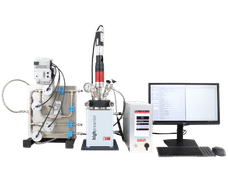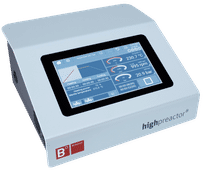Brewery waste is scientific fodder for producing liquid biofuels
Advertisement
Anyone cracking open a cold beer is probably not considering the wastewater left over after the beer was brewed. But for Cornell researchers, that vinegary effluent is a scientific playground for devising ways to transform wastewater into biofuels.
Employing powerful genome sequencing tools, Cornell scientists led by Largus T. Angenent, associate professor of biological and environmental engineering, have gained new insight into how efficiently the microbes in large bioreactors produce methane from brewery waste. They hope to use their new knowledge to shape these microbial communities so they will produce liquid biofuels and other useful products.
The scientists, including first author and research associate Jeffrey J. Werner, published their findings in Proceedings of the National Academy of Sciences.
"This question of linking function with microbial communities is something people have wanted to understand for a very long time," Angenent said. "And in order to link these things you have to have data."
The scientists had access to a plethora of data, thanks to a collaboration with engineers at Anheuser-Busch InBev, which makes Budweiser beer and operates nine domestic beer breweries that treat wastewater in bioreactors. They took regular samples of bioreactor sludge from each of the facilities over the course of a year and, using state-of-the-art genome sequencing software, they analyzed more than 400,000 gene sequences of the microbes in the sludge.
Among the thousands of species of bacteria, the researchers identified 145 types that were unique to each of the nine facilities - showing that each bioreactor hosted a specific microbial community. In their analysis they observed that certain types of bacteria called syntrophs had surprisingly stable populations.
"The cool thing we found was that if you're looking at these thousands of species of bacteria, it's a very dynamic system with things dying off and replacing them," Werner said. "There are certain signature populations that are resilient. Even if they get disturbed, they come right back up."
Typically inside these million-gallon bioreactor tanks, the microbial populations in the sludge interact and one of them produces methane gas. Anheuser-Busch InBev recoups 20 percent of its heat energy use through the methane produced, saving them millions of dollars every year.
Angenent said that where the genome surveys of these microbial communities could lead is particularly exciting. Understanding their functions and how they change with environment -- be it pH or temperature, for example -- could lead to learning how to make the communities of microbes perform new functions.
In ongoing research, the Cornell engineers are looking to prevent methane production by the microbes, and instead, to shape the bacterial communities to produce carboxylates, which are a precursor to the alkanes found in fuels.
"We are going to shape these communities so they start making what we want," Angenent said.































































